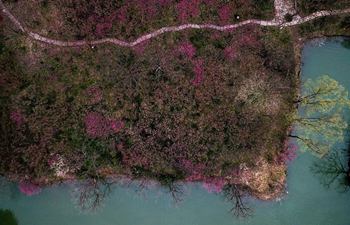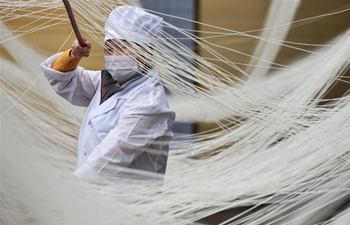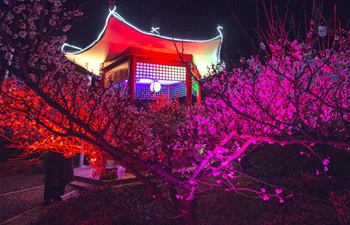SAN FRANCISCO, March 7 (Xinhua) -- Scientists from Stanford University have developed new laser-based imaging technology that would allow autonomous cars to "see" objects hidden around corners and react in advance.
The new technology, known as non-line-of-sight imaging, depends on analyzing scattered light particles that are ignored by guidance systems currently used in cars such as light detection and ranging (LIDAR) systems.
The existing LIDAR systems measure distance to a target by sending laser pulses towards the object and calculate the time it takes for light to be reflected. The data is then used to build a three-dimensional model of the object.
However, non-line-of-sight imaging takes the idea further. It collects multiple scattered light rather than the light that bounced directly back off an object to reconstruct the shape of hidden objects.
The researchers shoot pulses of laser light at a wall and, invisible to the human eye, those pulses bounce off objects around the corner and bounce back to the wall and to the detector, according to the study published Monday in the journal Nature.
"It is a very simple tweak to how you do imaging, but it has major implications in terms of how you can reconstruct the images from that information," Matthew O'Toole, co-lead author of the study, told the Guardian.
"It sounds like magic but the idea of non-line-of-sight imaging is actually feasible," said Gordon Wetzstein, assistant professor of electrical engineering and senior author of the paper, in a press release published on the website of Stanford University.
The researchers tested their technique successfully outside but they worked only with indirect light.
If the technology were placed on a car today, that car could easily detect things like road signs, safety vests or road markers, although it might struggle with a person wearing non-reflective clothing, they noted in the release.
"This is a big step forward for our field that will hopefully benefit all of us," said Wetzstein. "In the future, we want to make it even more practical in the 'wild.'"
Besides its application on autonomous vehicles, other uses of the technology could include seeing through foliage from aerial vehicles or giving rescue teams the ability to find people blocked from view by walls and rubble.















